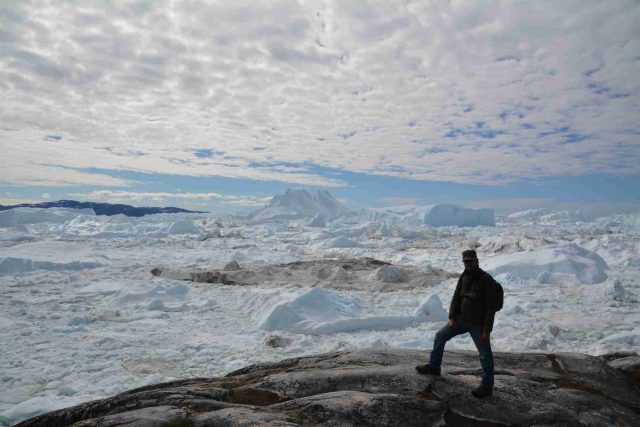All Around the World with the Most Travelled Indian
 By NITIN GAIROLA
By NITIN GAIROLA
Since there is no education like first-hand learning, I strongly recommend a visit to Greenland or Antarctica for all the enthusiastic climate science geeks out there and also for those who want to witness the true dramatic glory of our natural world in action. After all, seeing is believing and it’s not every day that you will hear and witness the thundering crack of a mega iceberg as it breaks from the glacial shelf and falls into the sea to become a part of it. And that’s the difference between a glacier and an Iceberg with the latter being a part of a glacier until it breaks free and becomes an Iceberg.

When I experienced an iceberg falling into the sea for the first time in the Arctic Greenland, it violently shook our boat and all on board got to feel its immense force. It was a piece of ice, as big as a skyscraper, that fell off the Eqi Glacier. But besides this one, we also heard such cracks and saw such falls from the most productive glacier in the Northern Hemisphere called Sermeq Kujalleq or the Jacobshavn glacier. It sits right next to the town of Ilulissat in the western coast of Greenland, well above Canada’s Baffin Island.
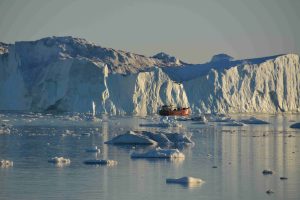
Since it was our first experience of seeing such dramatic scenery, it is a memory that is hard to erase for both Richa and me. You can’t see ice sheets and icebergs like this on any mountain range since it’s just not the same thing. Mountain ice is naturally not flat and is caused due to great altitude. It thus doesn’t have a single endless and dramatic view and it is also very hard to stay there for too long to truly appreciate it. You generally look at only one glacier at a time since they are scattered across the mountains. That’s why you really have to visit our planet’s polar regions to see limitless ice and icebergs floating all around your boat or below your chopper or tiny plane. Polar ice is one that is formed by latitude and without any significant alpine altitude (but lots of attitude I suppose).

In order to reach Jacobshavn and Eqi glaciers, we had taken a combination of small flights (think 8-seater planes) and boats in order to see the new icebergs forming from their glacial tongues. A glacial tongue is that floating portion of the glacier from where the icebergs break free into the sea. It’s the most visually interesting part of polar glaciers but one that has to be viewed from a certain safe distance. We couldn’t sleep much during our time in Greenland since we wanted to be out there and look at something we would never see again (or so we thought back in 2017). The midnight sun that never went down in July didn’t help with our self-inflicted and enjoyable insomnia either.
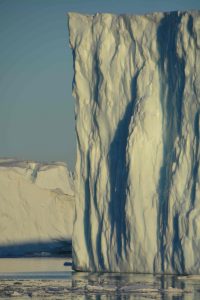
So that was 2017 and then came the winter of 2023 (but summer down south). We had booked a trip to Antarctica which, trust me, is not half as arduous as going to Greenland. Antarctica has all the infrastructure you could ask for inside the ships and it’s only the time you are out of it that can be slightly difficult due to the cold, and even that is quite bearable for most. And there are enough people to assist you and I am sure you will not forget your thermal inners, coats and caps when you visit this part of the world. It is actually a comfort trip and lots of young and old people do it but the expedition ships do have a minimum allowable age of 12, but some allow entry from 8 year onwards. So here price is the real concern.
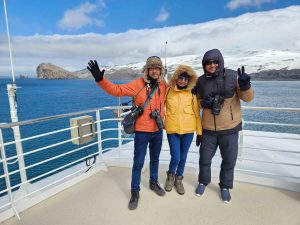
Our trip was a comfort one too but it has a twist that I could never ever have imagined would happen. So here is the thing – While all passengers wish for some calm sailing through the Drake’s Passage (an infamous section of the water where the Pacific, Atlantic and Southern Oceans converge), what I wanted was a ‘Drake Shake’. In sea parlance, ‘Drake Shake’ is the evil alter-ego of the calm & placid ‘Drake Lake’. The Drake’s Passage is named after the English sea explorer (called a pirate by the Spanish), Sir Francis Drake who had circumnavigated the globe between 1577 to 1580 via the perilous passage. During the golden age of voyages from the 1500s to 1700s, this part of the sea world was known to sink many wooden vessels but those, of course, were much flimsier compared to the state-of-the-art polar ships we have now. What we have now are ice-breakers and in those times, there were ships that were broken by the ice. Ernest Shackleton’s Endurance met the same fate in 1915 in one of the most heroic polar expedition survival stories.
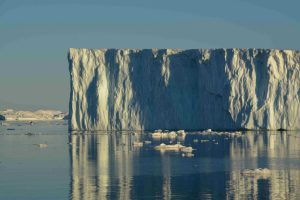
And on the Drake’s passage my wish had come true. We had a storm (but not a super storm) and the promenade decks had been cordoned off and while most passengers were warm and toasty inside (either in the halls or in their cabins), I decided to go to the top deck which was not restricted by the crew. There I met exactly one tourist – a kind looking old German who asked if I were mad. I nodded in agreement and we had a good laugh. He told me that it was his 3rd crossing of the Drake’s Passage and this was the worst weather he had seen here. That made me happy in a strange way especially since I knew I was really safe inside this modern marvel.
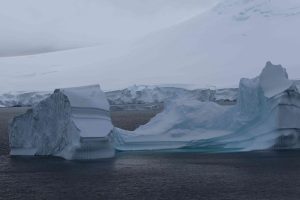
I don’t know how much a ship is supposed to rock before it rolls over (just being dramatic since ships don’t just roll over nowadays), but I believe our vessel was moving 25 to 30 degrees on each side. In any case, it seemed very significant to me. I had also just read about how 3 tourists had died on the Polaris vessel the previous sailing season when a ‘rogue wave’ (one that is higher than normal waves and hits from the side) had smashed the windows and swept these 3 souls with it.
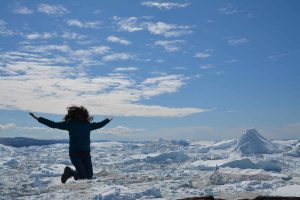
region is a reason to celebrate for Richa
But all this weather had a down side. The captain decided he was not going to make a scheduled stop on the coast that was supposed to be teeming with bird life as well as penguins (also birds) and seals. That I was despondent would be putting it very mildly and I was not alone in this. And with the weather inside the ship being gloomier than what was outside, the good captain took a bold call. In 2020 the world’s largest iceberg, A23a, had for the first time in 34 years broken free from the seabed in the Weddell Sea and started moving northwards. In late November 2023 it had reached the peninsular part of Antarctica and a month later in December it had reached far enough north for the captain to take a slight detour to bring the ship in front of this mega berg. And how big you ask this iceberg was? Well how about 6 times the size of Mumbai city?
The anticipation and the excitement of the passengers was palpable. And when we finally reached A23a, for a moment I couldn’t distinguish the blue of the ice from the blue of the water below and blue of the sky above. Just because A23a was so large, it from stretching horizon to horizon. It was an impenetrable wall of ice in front of us.
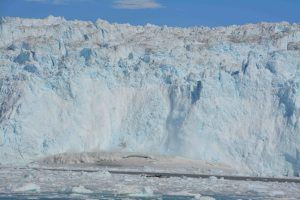
At that time when the A23a had started moving northwards in November 2023, it was the biggest climate headline for a while due to it possibly impacting wildlife migrations. It was also announced by the scientists aboard the ship that ours was the first non-research vessel (mild way to say the first tourist vessel), to reach A23a. In a way, we became the first tourists ever to see A23a. And if you just google now, you will find A23a is back in the news in September 2025. But this time the news is, as expected, grim. You see, as this giant berg moves northwards to relatively warmer waters, it is losing ice and is seen breaking up.
It truly has been a privilege and a joy to visit our polar regions and never in my wildest boyhood dreams could I have imagined to have lived such a large life. It may not have been smooth sailing all the while, but I can always say that I made it to the largest icebergs in the world.
(Nitin Gairola is from Dehradun and has travelled the natural world more than almost any Indian ever. He has set world travel records certified by India Book of Records, has written for Lonely Planet, and holds National Geographic conservation certifications. He is also a senior corporate executive in an MNC and in his early days, used to be a published poet as well. More than anything else, he loves his Himalayan home. Reach him at: www.facebook.com/ MostTravelledIndian/)

